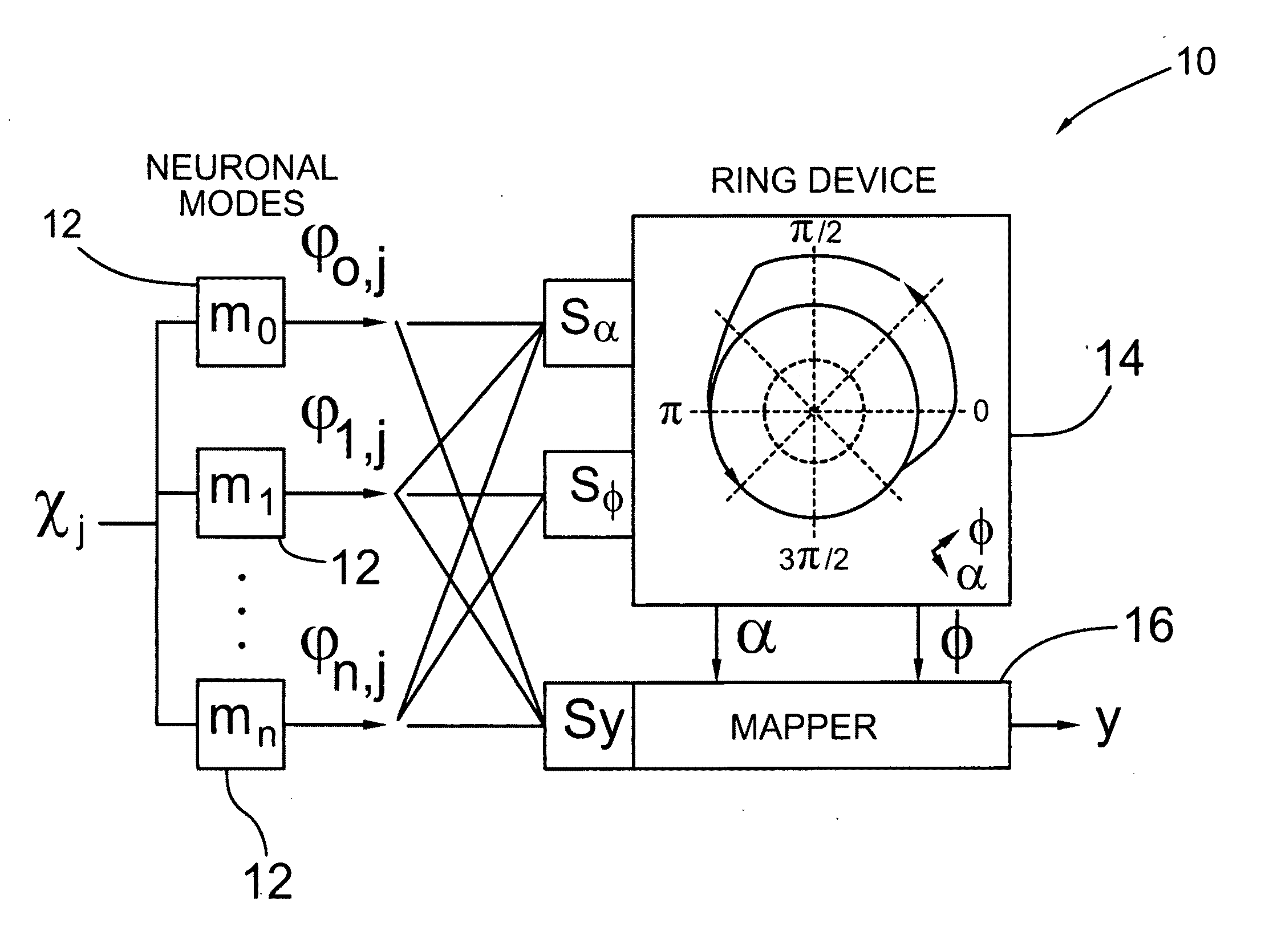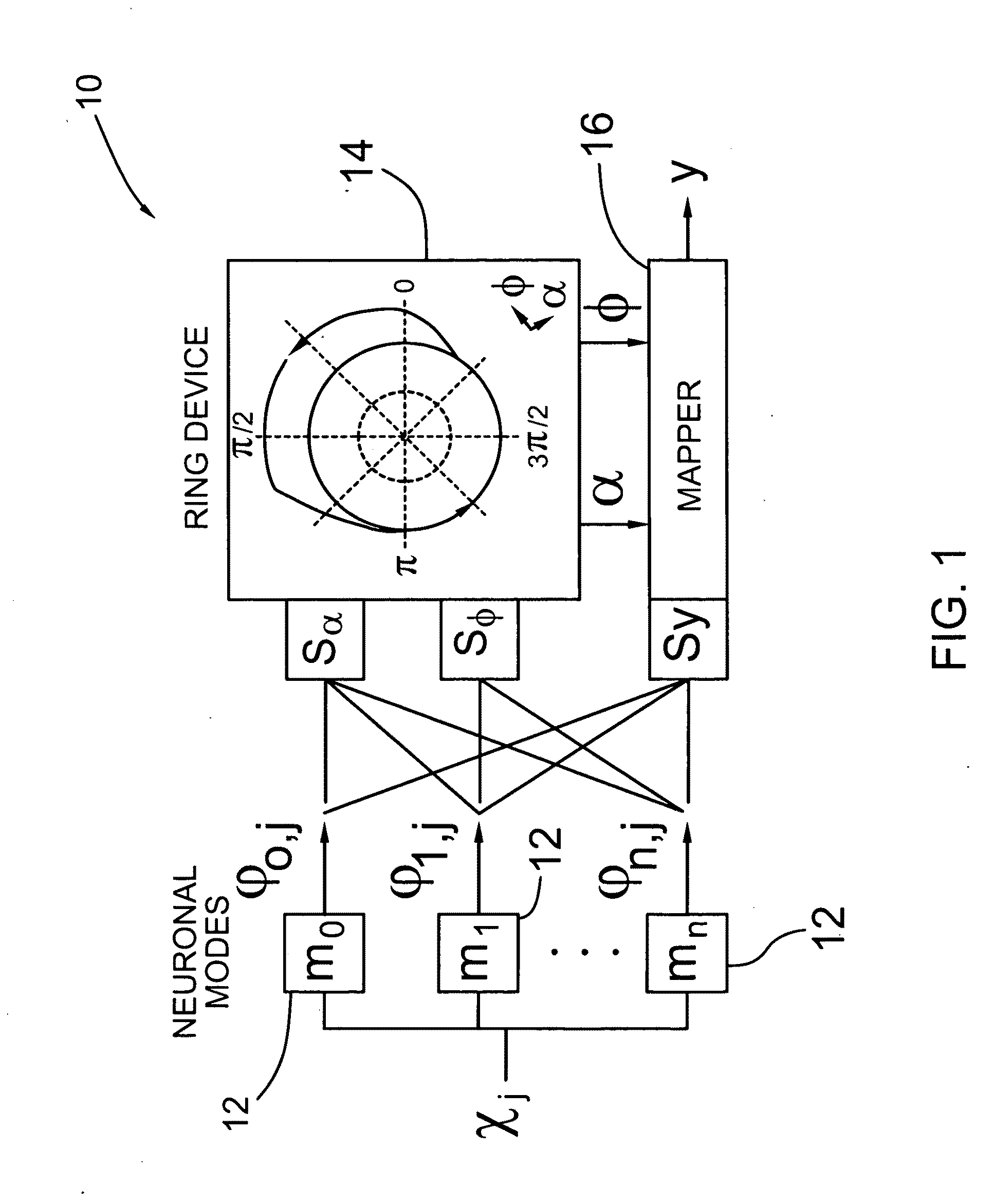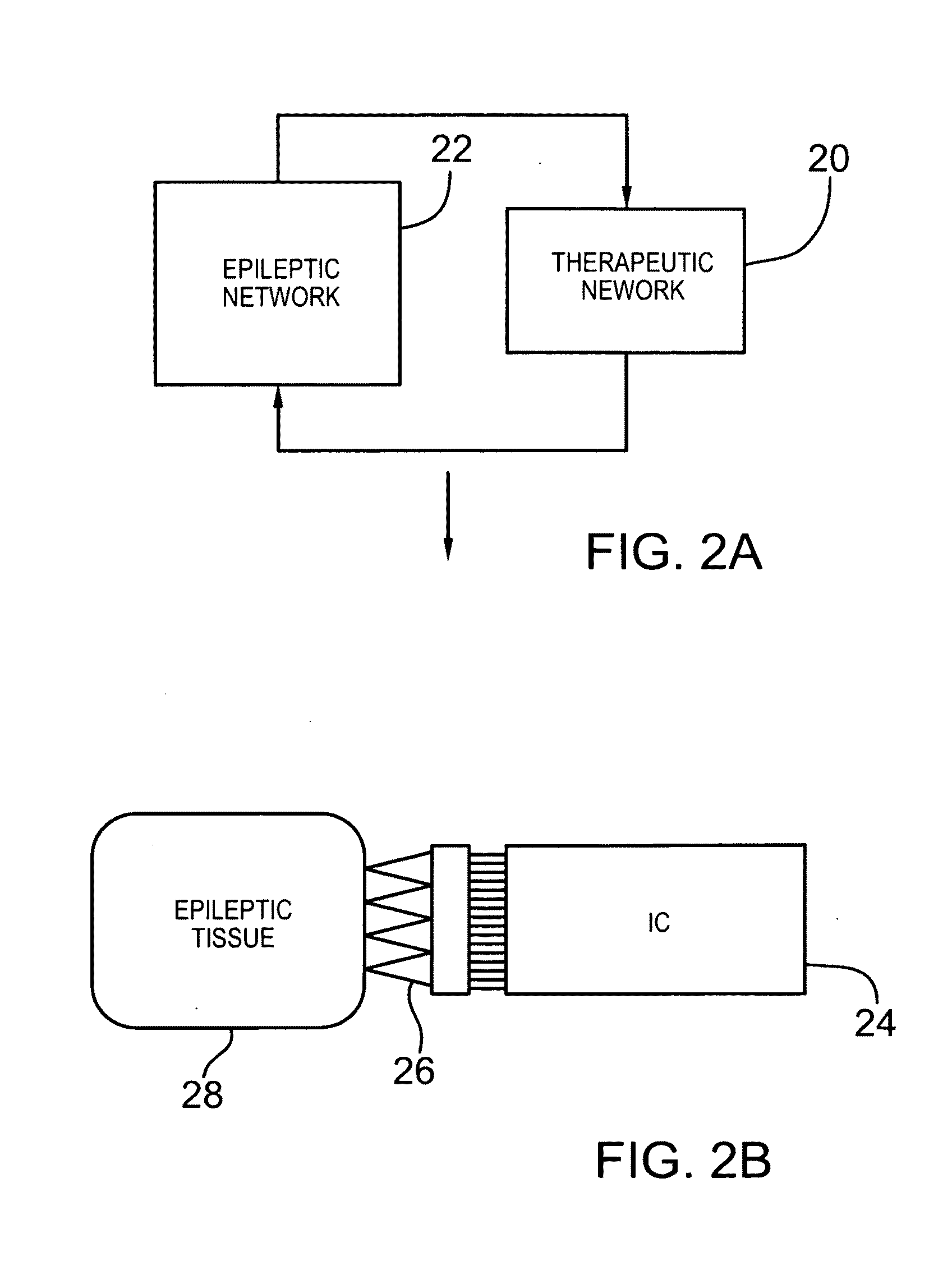System and method for cognitive rhythm generation
a cognitive rhythm and system technology, applied in the field of neural coding, can solve the problems of inability to adequately describe the brain using a purely generative model, and the brain is both a complex signal processor
- Summary
- Abstract
- Description
- Claims
- Application Information
AI Technical Summary
Benefits of technology
Problems solved by technology
Method used
Image
Examples
example 1
Phase Selectivity
[0085]Event timing or spatial relationships between an organism and its environment, or with respect to the organism itself (e.g. idiothetic self-cues), may reflect natural phase preferences in the rhythmic firing of neuronal ensembles. FIG. 4A shows an example of a CRG network comprising two (2) CRGs applied to obtain a functional-level description of neural phase coding through the combined action of neuronal modes and ring devices. The CRG network of FIG. 4A in this example is suitable for hippocampal theta coding using a clock (theta) CRG generating the population theta rhythm coupled to a labile (gamma) CRG representing local assembly-specific gamma activity. Here, three modes are indicated: P for a proportional zero-order mode; I for an integrating (monophasic) first-order mode; and D for a differentiating (biphasic) second-order mode. In this example, the output of the clock CRG represents the population theta oscillation, but in general the phase-varying sig...
example 2
Polarization-Dependent Precession
[0088]Depolarizing or hyperpolarizing current injections have been known to induce phase shifts in hippocampal network neurons in the presence of theta oscillations (Bland et al., Relationship between membrane potential oscillations and rhythmic discharges in identified hippocampal theta-related cells, J Neurophysiol, 88:3046-66, 2002). In a study by Kamondi et al. (Theta oscillations in somata and dendrites of hippocampal pyramidal cells in vivo: activity-dependent phase-precession of action potentials, Hioppocampus, 8:244-61, 1998), a sinusoidal theta-frequency current was injected into rat CA1 pyramidal place cells in vivo, atop a depolarizing bias current. While the burst-firing of the cells displayed preference for the rising edge of the sinusoidal stimulus, leading spikes shifted to earlier phases of the stimulus as the level of depolarization was increased, and bursts also intensified in duration and firing density.
[0089]This polarization-depe...
example 3
Precession by Variation in Modal Character
[0091]Theta phase precession in the navigating rat occurs when neurons in an activated place field fire consecutively at earlier phases of the underlying theta field oscillation. The degree of precession is observed to be correlated to the distance traversed in a given place field, not the time the animal spends in the place field (O'Keefe and Recce, Phase relationship between hippocampal place units and the EEG theta rhythm, Hippocampus, 3:317-30, 1993). The rate of precession depends on the size of the place field and how quickly the animal moves through it. Smaller place fields correlate with faster precession rates than larger ones. For the same place field, the precession slope will be steeper for a quicker animal than a slower moving one, presumably due to the greater distance covered per unit time (Geisler et al., Hippocampal place cell assemblies are speed-controlled oscillators, PNAS, 104:8149-54, 2007). While the extent of the tota...
PUM
 Login to View More
Login to View More Abstract
Description
Claims
Application Information
 Login to View More
Login to View More - R&D
- Intellectual Property
- Life Sciences
- Materials
- Tech Scout
- Unparalleled Data Quality
- Higher Quality Content
- 60% Fewer Hallucinations
Browse by: Latest US Patents, China's latest patents, Technical Efficacy Thesaurus, Application Domain, Technology Topic, Popular Technical Reports.
© 2025 PatSnap. All rights reserved.Legal|Privacy policy|Modern Slavery Act Transparency Statement|Sitemap|About US| Contact US: help@patsnap.com



